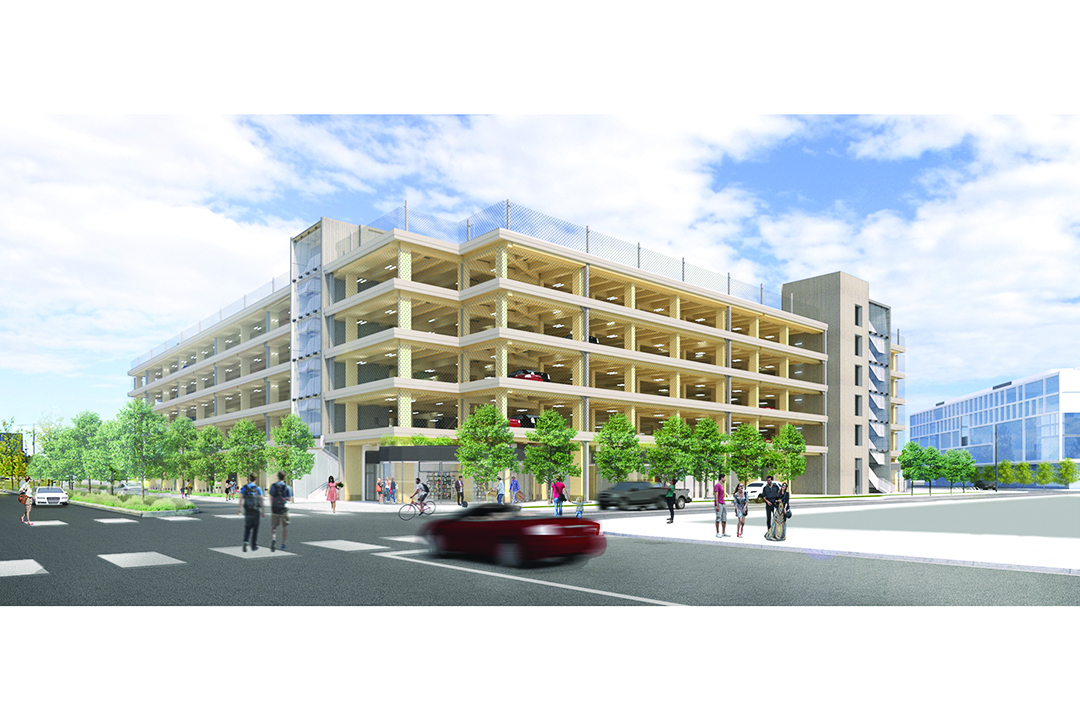A new parking construction project — the Retail and Parking Commons — is in the works at UTSC. A report on the project was presented at the UTSC Campus Affairs Committee meeting at its first meeting of the year on January 13.
At the Campus Affairs Committee meeting, and at a meeting of the UTSC Academic Affairs Committee on January 10, Vice-Principal Academic & Dean William A. Gough presented a report regarding the dynamic plans for the duration of the winter semester. Katherine Larson, vice-dean teaching, learning & undergraduate programs, also provided an update on minor modifications to the undergraduate social sciences and the graduate management curriculums at UTSC.
Report on Retail and Parking Commons
Andrew Arifuzzaman, UTSC’s chief administrative officer, shared an introductory report on the planning of the Retail and Parking Commons project at the Campus Affairs meeting.
“Located on what is now surface Lot H, a new 42,877 [gross square metre], six-storey structure will serve staff and faculty on the north campus with permit parking on upper levels, and short-term parking for visitors and for students who choose to pay for short-term parking instead of buying term or annual permits,” Arifuzzaman explained.
Arifuzzaman also spoke on why it is necessary to begin integrating vertical parking structures on campus: “If we were to stay with surface parking, which has been the tradition at the campus, effectively what it does is it blocks off all of our future development opportunities with just creating parking.”
The structure will also be the new home of UTSC’s bookstore, which is currently located in the Bladen Wing building. Additionally, its covered ground floor may be used for various on-campus activities, such as for farmers’ markets.
Moreover, the project was planned with sustainability efforts in mind, and it will thus be a mass timber construction, which creates panels, posts, and beams by layering wood. In doing so, the project “avoids [using] approximately 977 tonnes of [carbon dioxide] compared to a pre-cast concrete structure and sequesters 3,763 tonnes of [carbon dioxide] for a total environmental benefit of nearly 4,740 tonnes of [carbon dioxide].”
The project is anticipated to be completed by January 2024.
Plans and preparation for the remaining winter term
Gough shared in his report that he hopes to have updates on the delivery of the rest of the winter semester by the second week of the semester.“I fully acknowledge that not everyone will be in agreement… As one that is instrumental in making such decisions, I too have [been] frustrated that decisions, no matter where they end, will have clear disadvantages to certain groups,” he added.
“All aspects of a full in-person return are being carefully considered, and they’re not trivial,” said Gough. He assured committee members that all decisions are being made in consultation with other divisions and the provost’s office.
“We have been planning and working to have the campus fully operational to receive students [by] the end of January,” Arifuzzaman added.
Modifications to curriculum
Larson shared recent changes to the undergraduate social science curriculum. “It’s always really exciting to start to see these minor changes coming through and the really rich and diverse ways in which our faculty across departments are contributing to the excellence of our curriculum,” she said.
Two new courses will be added to the Department of Anthropology, five to the Department of Global Development Studies, and two to the Department of Health & Society. The inclusion of these courses within each of their respective departments is intended to fill gaps in the existing curricula and cover new topics that have progressively become relevant in each field.
Mary Silcox, vice-dean graduate & postdoctoral studies, presented the changes that the university has made to the graduate curriculum in the Department of Management pertaining to the Master of Accounting and Finance program, which prepares students to take the Chartered Professional Accountant Common Final Examination. In essence, the changes mean that certain courses that used to be taught later on in the program will now instead be taught in the program’s initial two sessions.


